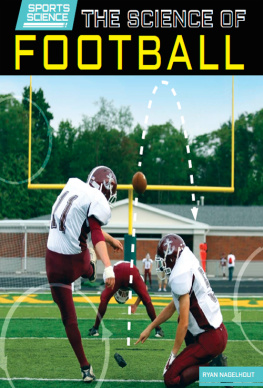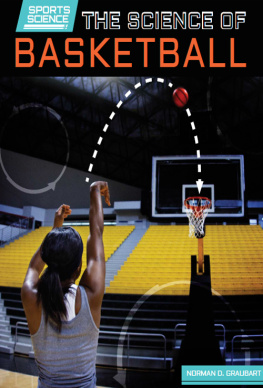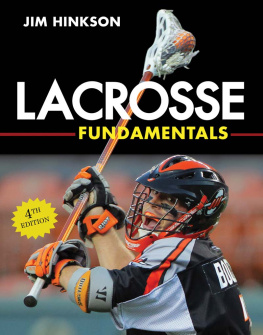Published in 2018 by
Lucent Press, an Imprint of Greenhaven Publishing, LLC
353 3rd Avenue
Suite 255
New York, NY 10010
Copyright 2018 Lucent Press, an Imprint of Greenhaven Publishing, LLC.
All rights reserved. No part of this book may be reproduced in any form without permission in writing from the publisher, except by a reviewer.
Designer: Seth Hughes
Editor: Vanessa Oswald
Cataloging-in-Publication Data
Names: Wiener, Gary.
Title: Lacrosse: Science on the Field / Gary Wiener.
Description: New York : Lucent Press, 2018. | Series: Science behind sports | Includes index.
Identifiers: ISBN 9781534561175 (library bound) | ISBN 9781534561182 (ebook)
Subjects: LCSH: Lacrosse--Juvenile literature.
Classification: LCC GV989.14 W54 2018 | DDC 796.362--dc23
Printed in the United States of America
CPSIA compliance information: Batch #BS17KL: For further information contact Greenhaven Publishing LLC, New York, New York at 1-844-317-7404.
Please visit our website, www.greenhavenpublishing.com. For a free color catalog of all our high-quality books, call toll free 1-844-317-7404 or fax 1-844-317-7405.
Contents
Foreword
Chapter 1:
The Fastest Game on Two Feet
Chapter 2:
The Biomechanics of Lacrosse
Chapter 3:
Training for Endurance, Agility, and Strength
Chapter 4:
Common Lacrosse Injuries
Chapter 5:
Mind Over Matter: The Psychology of Lacrosse
Chapter 6:
Current Technology and Lacrosse
Notes
Glossary
For More Information
Index
Picture Credits
About the Author
Foreword
 When people watch a sporting event, they often say things such as, That was unbelievable! or How could that happen? The achievements of superstar athletes often seem humanly impossibleas if they defy the laws of natureand all sports fans can seemingly do is admire them in awe.
When people watch a sporting event, they often say things such as, That was unbelievable! or How could that happen? The achievements of superstar athletes often seem humanly impossibleas if they defy the laws of natureand all sports fans can seemingly do is admire them in awe.
However, when a person learns the science behind sports, the unbelievable becomes understandable. It no longer seems as if athletes at the top of their game are defying the laws of nature to achieve greatness; it seems as if they are using the laws of nature to their fullest potential. This kind of knowledge might be thought by some to take away from a pure appreciation of sports, but that is far from the truth. Understanding the science that makes athletic achievements possible allows fans to gain an even deeper appreciation for athletic performances and how athletes use science to their advantage.
This series introduces readers to the scientific principles behind some of the worlds most popular sports. As they learn about physics concepts such as acceleration, gravity, and kinetic versus potential energy, they discover how these concepts can be applied to pitches in baseball, flips in gymnastics, dunks in basketball, and other movements in a variety of sports. In addition to the physics behind amazing plays, readers discover the science behind basic training and conditioning for different sports, the biology involved in understanding common sports injuries and their treatments, and the technological advances paving the way for the future of athletics.
The scientific concepts presented in this series are explained using accessible language and engaging examples. Complicated principles are simplified through the use of detailed diagrams, charts, graphs, and a helpful glossary. Quotations from scientists, athletes, and coaches give readers a firsthand perspective, and further research is encouraged through a detailed bibliography and a list of additional resources.
Athletes, sports fans, and budding scientists will get something important out of this series: information about how to exercise and fuel the body to excel in competition, a deeper appreciation for the history of their favorite sport, and a stronger understanding of how science works in the world around us.
The worlds of science and sports are not as far apart as they may seem. In fact, sports could not exist without science. In understanding the relationship between these two worlds, readers will become more knowledgeable sports fans and better athletes.
Chapter
The Fastest Game on Two Feet
 It was a hot August afternoon in Western New York. Under a bright sun, a group of players, ranging from 13 to 60 years old, engaged in a lacrosse scrimmage on a high school field surrounded by bleachers. There was no one in the stands. The players tossed the ball expertly from one to another, and it rarely hit the ground unless a shot was attempted. One of the players was just entering high school, several were college students, some were ex-college players who now participate just for fun, and others were nearing retirement age. Players rotated in and out, with midfielders sometimes spending only a few minutes out on the field, trying to avoid heat exhaustion. One midfielder intercepted the ball on the defensive end, then sprinted the length of the field toward the opposing goalie. As he neared the net, in one swift movement, he brought the lacrosse stick behind his shoulders and flipped the ball past the goalie into the net. The other players called him Hollywood.
It was a hot August afternoon in Western New York. Under a bright sun, a group of players, ranging from 13 to 60 years old, engaged in a lacrosse scrimmage on a high school field surrounded by bleachers. There was no one in the stands. The players tossed the ball expertly from one to another, and it rarely hit the ground unless a shot was attempted. One of the players was just entering high school, several were college students, some were ex-college players who now participate just for fun, and others were nearing retirement age. Players rotated in and out, with midfielders sometimes spending only a few minutes out on the field, trying to avoid heat exhaustion. One midfielder intercepted the ball on the defensive end, then sprinted the length of the field toward the opposing goalie. As he neared the net, in one swift movement, he brought the lacrosse stick behind his shoulders and flipped the ball past the goalie into the net. The other players called him Hollywood.
These two dozen players in an empty stadium were playing The Creators Game. Whether they participated to increase their skills or for sheer enjoyment, they all share the same passion for this ancient sport. At its heart, lacrosse is a simple game. As one former player, Sean Lydon, remarked when asked to describe the sport, Put the rubber ball in the big metal square. Hit people. Run a lot. Repeat.

Many play lacrosse simply for the enjoyment of the sport.
Native American Origins
Like the blues and jazz in music and the short story in literature, lacrosse is a uniquely North American invention. The blues originates with African Americans, and the short story began with American author Edgar Allan Poe, who first defined it. Lacrosse goes back much further, to the original inhabitants of Americathe Native Americanswho played the game centuries before Europeans ever set eyes on the North American continent.
Fast Break!
Early Lacrosse had virtuaLly no rules against rough play, and because players wore no protective gear, they often finished a game bruised and bloodied.
Lacrosse was a widely popular activity among Native Americans. It was played by at least 48 Native American groups in southern Canada and in all parts of the United States other than the extreme Southwest. Lacrosse was of tremendous importance to the Indians
Early lacrosse had many such names, as each tribe had its own term for the sport. The Algonquin group called it teiontsesiksaheks; the Haudenosaunee name was tehontshikSaheks. However, the most common name Native Americans used was baggataway. Primitive lacrosse was dramatically different from that which is seen today on high school, college, and professional fields. It was a mass game, with teams rarely having fewer than 100 players and sometimes having more than 1,000. The playing field could be miles long (although most were under 0.5 mile, or 0.8 km), and games could last for days. There was no prescribed width to the playing field, so play could range far and near. Some tribes used a single pole or tree or rock for the goal, and players scored by hitting the target with the ball. Others had two goal posts, six to nine feet apart, and the ball had to pass between them. Players often wore only breechcloth and generally went barefoot.













 When people watch a sporting event, they often say things such as, That was unbelievable! or How could that happen? The achievements of superstar athletes often seem humanly impossibleas if they defy the laws of natureand all sports fans can seemingly do is admire them in awe.
When people watch a sporting event, they often say things such as, That was unbelievable! or How could that happen? The achievements of superstar athletes often seem humanly impossibleas if they defy the laws of natureand all sports fans can seemingly do is admire them in awe.